In recent years, the contact grill market has seen a significant surge in popularity across both Europe and the USA. As consumers seek healthier cooking alternatives and the convenience of quick, delicious meals, contact grills have emerged as a favorite choice. This article delves into the factors driving this growth, the strategies of key vendors, and the evolving market trends and consumer preferences shaping the industry. Additionally, we’ll explore the impact of sustainability on vendor strategies, compare the contact grill market in Europe and the USA, dissect what buyers look for in contact grill vendors, discuss the regulatory environment and compliance challenges, and finally, provide a forecast and outlook for the future of the contact grill market.
Introduction to Contact Grill Market Dynamics
The contact grill market has experienced a surge in popularity over recent years, driven by the increasing demand for convenient and health-conscious cooking solutions. As consumers seek to elevate their culinary experiences at home without compromising on taste or nutrition, contact grills have emerged as a favorite choice for both seasoned chefs and novices alike. This dynamic market segment is characterized by rapid technological advancements, diverse product offerings, and a growing emphasis on user experience.
Contact grills, also known as countertop grills or flat-top grills, are designed to mimic the cooking process of a traditional grill but with the convenience of an indoor appliance. They provide a compact and efficient way to cook a variety of foods, including steaks, burgers, seafood, and vegetables, with minimal mess and cleanup. The market dynamics of contact grills are influenced by several key factors:
Consumer Lifestyle Shifts: The fast-paced lifestyle of modern consumers has led to a preference for quick and easy cooking methods. Contact grills offer a perfect solution for individuals who want to enjoy a delicious meal without spending hours in the kitchen. This convenience factor has played a significant role in the market’s growth.
Health and Wellness Trends: With an increasing focus on health and wellness, consumers are gravitating towards cooking methods that minimize the addition of fats and oils. Contact grills, which cook food directly on their surfaces, help reduce the need for added fats, making them a popular choice for health-conscious individuals.
Technological Advancements: The contact grill market has seen a steady stream of technological innovations. Features such as adjustable heat settings, non-stick surfaces, and built-in thermometers have made these appliances more versatile and user-friendly. These advancements have not only improved the cooking experience but have also expanded the target audience for contact grills.
Product Diversification: Manufacturers have responded to the market’s demands by diversifying their product lines. Contact grills now come in various sizes, shapes, and with additional functionalities, such as adjustable cooking plates, reversible surfaces, and even built-in presses for perfect burgers. This variety caters to a wide range of consumer needs and preferences.
Globalization of Flavors: As people become more exposed to international cuisines, there is a growing interest in cooking techniques that can replicate these flavors at home. Contact grills provide a means to achieve similar results, whether it’s the smoky flavor of a barbecue or the char-grilled taste of a sizzling steak.
Sustainability and Eco-Friendly Options: In line with global sustainability efforts, some contact grill vendors are focusing on eco-friendly designs and materials. These greener options not only reduce the environmental impact but also resonate with consumers who are increasingly concerned about the planet.
Distribution Channels: The distribution of contact grills has expanded beyond traditional brick-and-mortar stores to include online platforms. This has made it easier for consumers to compare products, read reviews, and make informed purchasing decisions.
Competitive Landscape: The contact grill market is highly competitive, with a range of established brands and emerging players vying for market share. This competition drives innovation and ensures that consumers have access to high-quality products at competitive prices.
Regulatory Environment: Contact grill vendors must comply with various safety and health regulations, which can vary by region. Ensuring compliance while also meeting consumer expectations for quality and performance is a challenge that requires careful attention to detail.
In conclusion, the contact grill market is dynamic and rapidly evolving, with a strong focus on innovation and consumer needs. As the market continues to grow, it will be interesting to see how vendors adapt to changing trends and consumer preferences, ultimately shaping the future of the contact grill industry.
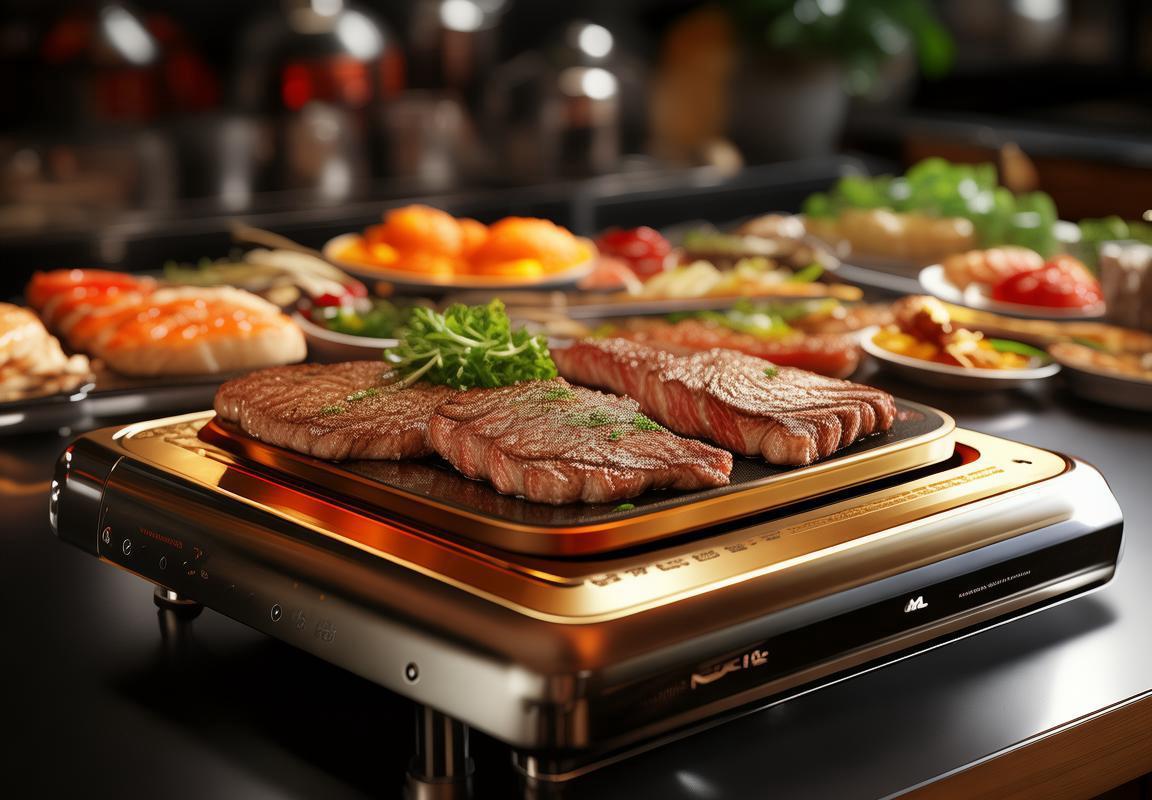
The Rise of Contact Grills in Europe and the USA
The Contact Grill market has experienced a significant surge in popularity, particularly in Europe and the USA, reshaping the way consumers approach outdoor cooking. This rise can be attributed to several key factors that have propelled contact grills to the forefront of the grilling landscape.
In Europe, the demand for contact grills has been bolstered by a growing appreciation for outdoor living spaces. As urban landscapes evolve, more people are investing in patios, balconies, and rooftop gardens, creating a perfect setting for compact cooking solutions like contact grills. The convenience of these appliances, which can provide professional-level grilling on a smaller scale, has resonated well with city dwellers looking to enjoy a gourmet meal without the need for extensive outdoor space.
The USA, on the other hand, has seen contact grills gain traction among health-conscious consumers. With a strong emphasis on grilling over cooking methods that may add more fat, contact grills have become a favorite among those seeking lean, grilled proteins. The sleek design and ease of use of these grills have also made them a staple in outdoor kitchens, patios, and even indoor settings, as they can be easily stored and brought out when needed.
The Contact Grill market’s growth is further fueled by technological advancements. Manufacturers have been quick to integrate features like adjustable heat settings, non-stick surfaces, and removable cooking plates, making these grills more versatile and user-friendly. In Europe, where gourmet cooking is a cultural norm, the ability to replicate restaurant-quality grill marks has been a significant draw for both professionals and home cooks alike.
In the USA, the emphasis on convenience and speed has led to the development of portable and compact contact grills. These models are perfect for tailgating, camping trips, or anyone looking for a quick and easy way to cook a meal. The portability of these appliances has also made them a popular choice for students and young professionals living in apartments or small homes.
The Contact Grill market is also seeing a surge in eco-friendly and sustainable options. With concerns over climate change and environmental impact, vendors are focusing on materials that are recyclable or biodegradable. In Europe, where sustainability is a major social and political issue, this trend has gained considerable momentum.
The rise of contact grills in both Europe and the USA has not gone unnoticed by chefs and culinary enthusiasts. Chefs have started to incorporate contact grills into their cooking techniques, showcasing the versatility of these appliances in creating a wide array of dishes. From delicate fish fillets to juicy steaks, the even heat distribution and precise temperature control of contact grills have made them a favorite among culinary professionals.
In Europe, the market is witnessing a blend of traditional and modern contact grills, with some models designed to mimic the cooking styles of various European cuisines. This diversity caters to a broad consumer base, including those who prefer a touch of authenticity in their outdoor cooking experiences.
The USA market, while still embracing convenience, is also seeing an increase in the variety of flavors and finishes available on contact grills. The ability to cook with different marinades and spices, coupled with the ease of cleaning, has made these grills a must-have for many American consumers.
The Contact Grill market’s growth is not without its challenges. Vendors must navigate the complexities of international trade and comply with varying safety and environmental regulations across Europe and the USA. Additionally, the market is becoming increasingly competitive, with new entrants bringing innovative designs and features to the table.
Despite these challenges, the future of contact grills in Europe and the USA looks promising. The combination of convenience, health benefits, technological advancements, and an increasing focus on sustainability has set the stage for continued growth. As consumers continue to seek out efficient and high-quality cooking solutions, contact grills are poised to maintain their position as a staple in the outdoor cooking industry.
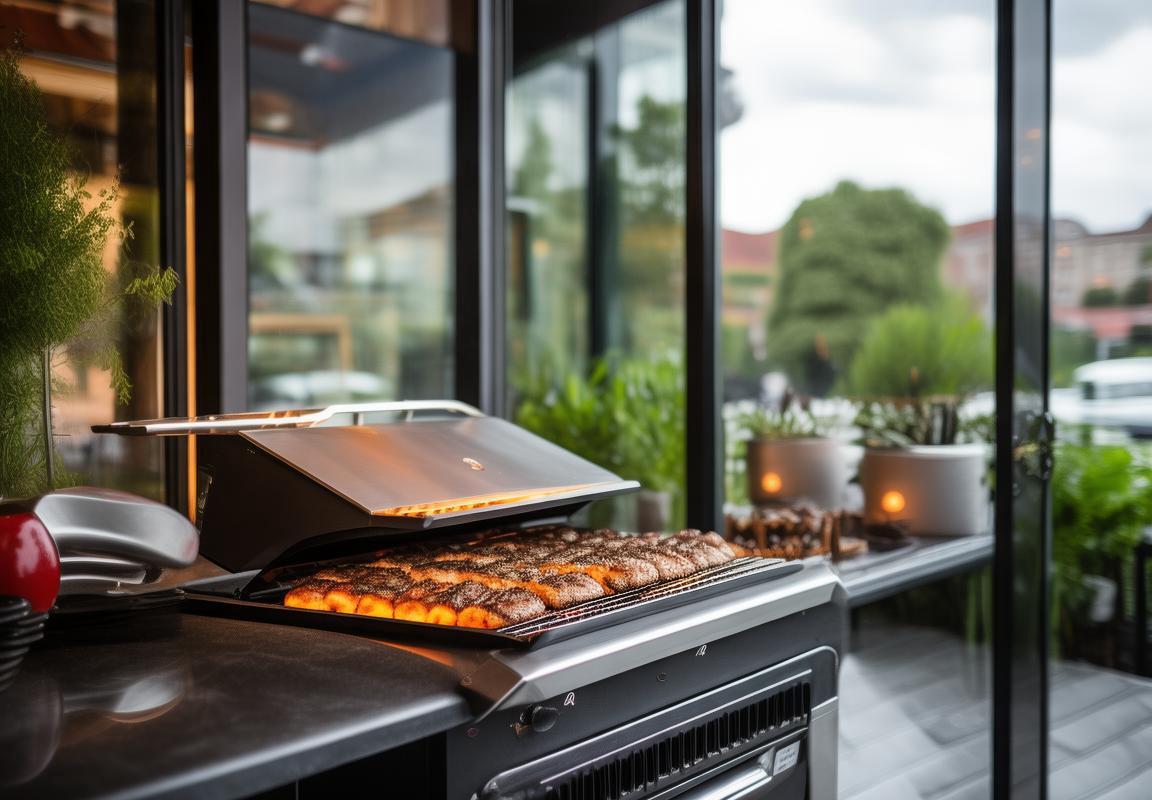
Understanding Contact Grill Vendors: Key Players
In the thriving market of contact grills, several key vendors have emerged as dominant forces, each bringing unique features and innovations to the table. These companies not only cater to the culinary enthusiasts but also to those seeking convenience and efficiency in their kitchen appliances.
-
Breville: The Australian InnovatorBreville, known for its high-quality kitchen appliances, has made a significant mark in the contact grill market. With a focus on Australian design and technology, Breville offers a range of contact grills that are praised for their even heat distribution and non-stick surfaces. Their products often feature advanced features like adjustable temperature controls and removable drip trays, making them a favorite among both professional chefs and home cooks.
-
George Foreman: The Brand IconGeorge Foreman, the namesake of the iconic grill, has become synonymous with outdoor grilling and indoor contact grilling. The brand has expanded its portfolio to include indoor contact grills that are compact, easy to clean, and deliver restaurant-quality results. Their grills are often designed with multiple plates for grilling multiple foods simultaneously, making them a practical choice for families and individuals alike.
-
Cuisinart: The Versatile ChoiceCuisinart, a well-respected name in kitchen appliances, offers a variety of contact grills that cater to different preferences. Their grills are known for their versatility, as they can be used for grilling, searing, and even pan-frying. With features like adjustable heat settings and reversible plates, Cuisinart contact grills are a staple in many kitchens, offering both convenience and functionality.
-
Hamilton Beach: The Budget-Friendly OptionFor those looking for a budget-friendly contact grill without compromising on quality, Hamilton Beach has stepped up to the plate. Their grills are designed to provide a great value for money, with essential features that meet the basic needs of a home cook. While they may not have all the bells and whistles of high-end models, Hamilton Beach grills are reliable and often come with a variety of cooking options to suit different types of food preparation.
-
BergHOFF: The European TouchBergHOFF, a European brand, brings a unique European design aesthetic to the contact grill market. Their grills are often crafted with stainless steel and other high-quality materials, ensuring durability and a sleek look. BergHOFF’s commitment to quality and design has earned them a loyal following, particularly among those who appreciate a touch of European elegance in their kitchenware.
-
Calphalon: The Premium ChoiceCalphalon, known for its premium cookware, has ventured into the contact grill market with a line of grills that reflect their commitment to quality. These grills are designed with the same attention to detail as their cookware, offering even heating and non-stick surfaces that make cooking a breeze. Calphalon’s contact grills are often priced on the higher end, but they appeal to those who value performance and longevity in their kitchen tools.
-
Oster: The Timeless BrandOster, with its roots in kitchen appliances, has been a staple in many homes for decades. Their contact grills are designed to be durable and user-friendly, with features that make cooking easier and more enjoyable. While not as sleek as some of the newer brands, Oster’s reputation for reliability has kept them a top choice for many consumers.
-
Crock-Pot: The Versatile Kitchen WorkhorseCrock-Pot, best known for its slow cookers, has extended its line to include contact grills. These grills are designed to be versatile, offering a variety of cooking functions that go beyond grilling. Crock-Pot’s approachable pricing and practical design have made them a go-to brand for those looking for a multi-purpose kitchen appliance.
These key players in the contact grill market have carved out their niches through innovation, design, and customer satisfaction. Whether it’s the sleekness of Breville, the iconic name of George Foreman, the versatility of Cuisinart, or the budget-friendly options from Hamilton Beach, each vendor brings something unique to the table, making the choice of a contact grill a personal one that reflects the cook’s preferences and needs.
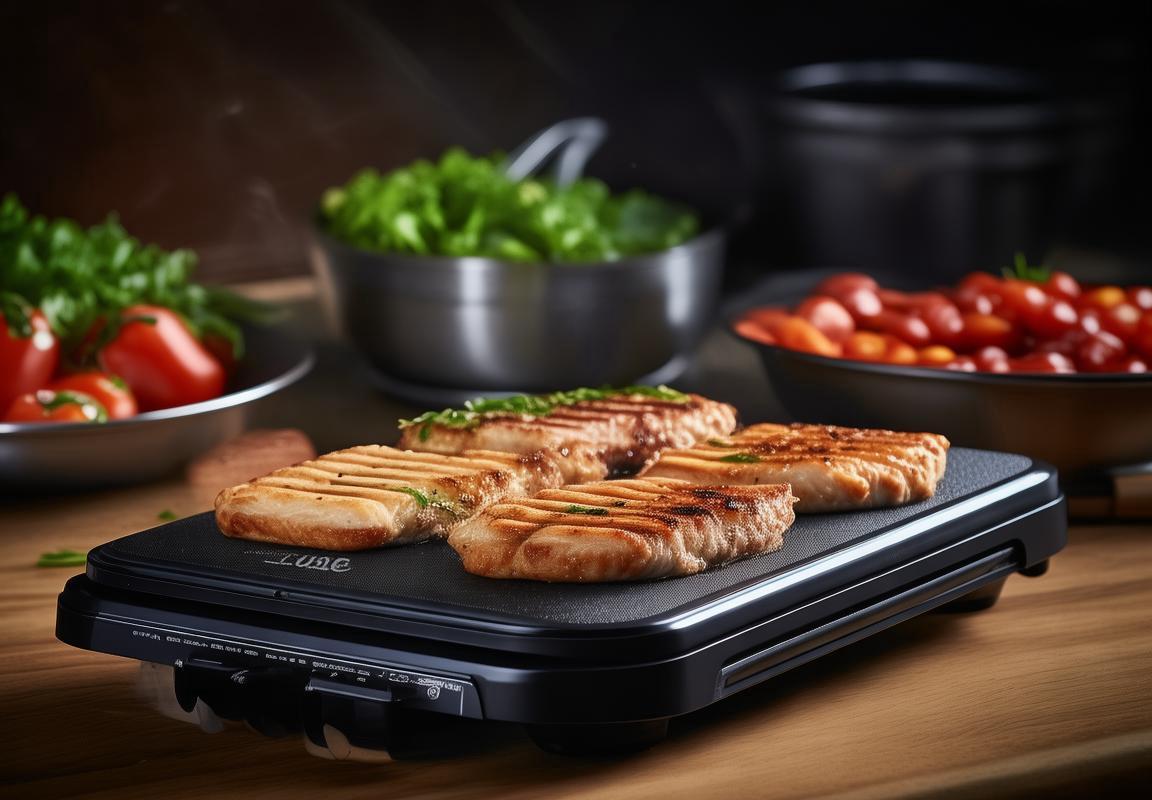
Market Trends and Consumer Preferences
In recent years, the market for contact grills has seen a significant surge, driven by evolving consumer preferences and technological advancements. These trends are shaping the landscape of the contact grill industry, influencing both manufacturers and consumers alike.
The shift towards healthier cooking methods has been a pivotal factor in the growth of contact grills. With an increasing awareness of the health benefits of grilling over frying, consumers are gravitating towards appliances that offer a healthier alternative. Contact grills, with their ability to cook food with minimal oil, have become a popular choice for health-conscious consumers.
One notable trend is the demand for convenience. Modern lifestyles often leave little time for cooking, and contact grills have stepped in to fill this gap. Their ease of use, quick cooking times, and compact designs make them a convenient option for busy individuals and families. The rise of single-serve and compact models has also catered to the needs of consumers looking for quick, on-the-go meals.
Smart technology integration is another trend that’s reshaping the market. Contact grill vendors are increasingly incorporating smart features such as temperature control, timer settings, and Bluetooth connectivity. These innovations not only enhance the cooking experience but also provide users with the ability to monitor and adjust their grills remotely, adding a layer of convenience and control.
Sustainability is also a growing concern among consumers, and contact grill vendors are responding by producing eco-friendly models. From energy-efficient designs to recyclable materials, these vendors are aiming to meet the demands of environmentally conscious buyers.
The preference for a variety of cooking surfaces is on the rise as well. Contact grill vendors are now offering a range of surfaces, from non-stick to cast iron, to cater to different cooking styles and preferences. This variety allows consumers to experiment with different types of food and achieve desired textures and flavors.
Customization is another key trend. Many consumers are looking for grills that can be tailored to their specific needs, whether it’s through adjustable heat settings, interchangeable plates, or modular designs. This personalized approach to cooking equipment is appealing to those who want to have control over their cooking process.
In terms of design, there’s a noticeable trend towards sleeker, modern aesthetics. Contact grills are no longer just utilitarian appliances; they are becoming a statement piece in kitchen decor. The demand for stylish, yet functional grills is driving vendors to create products that not only perform well but also look good.
The rise of social media and online reviews has also had a significant impact on consumer preferences. Word-of-mouth recommendations and influencer endorsements are influencing purchasing decisions more than ever before. Contact grill vendors are now focusing on building a strong online presence and leveraging social media to showcase their products and engage with consumers.
In the realm of marketing, there’s a shift towards storytelling. Vendors are not just selling a product; they are selling a lifestyle. The narrative around contact grills often revolves around outdoor cooking, family gatherings, and the joy of creating delicious meals. This storytelling approach is resonating with consumers who are looking for more than just a cooking appliance.
Lastly, the global pandemic has accelerated certain trends in the contact grill market. With more people cooking at home, there has been a surge in demand for kitchen appliances that can simplify the cooking process. Contact grills, with their ease of use and health benefits, have become a staple in many homes during these unprecedented times.
In conclusion, the market trends and consumer preferences in the contact grill industry are diverse and multifaceted. From health and convenience to technology and sustainability, these factors are driving the innovation and evolution of contact grills, ensuring that they remain a popular choice among consumers.
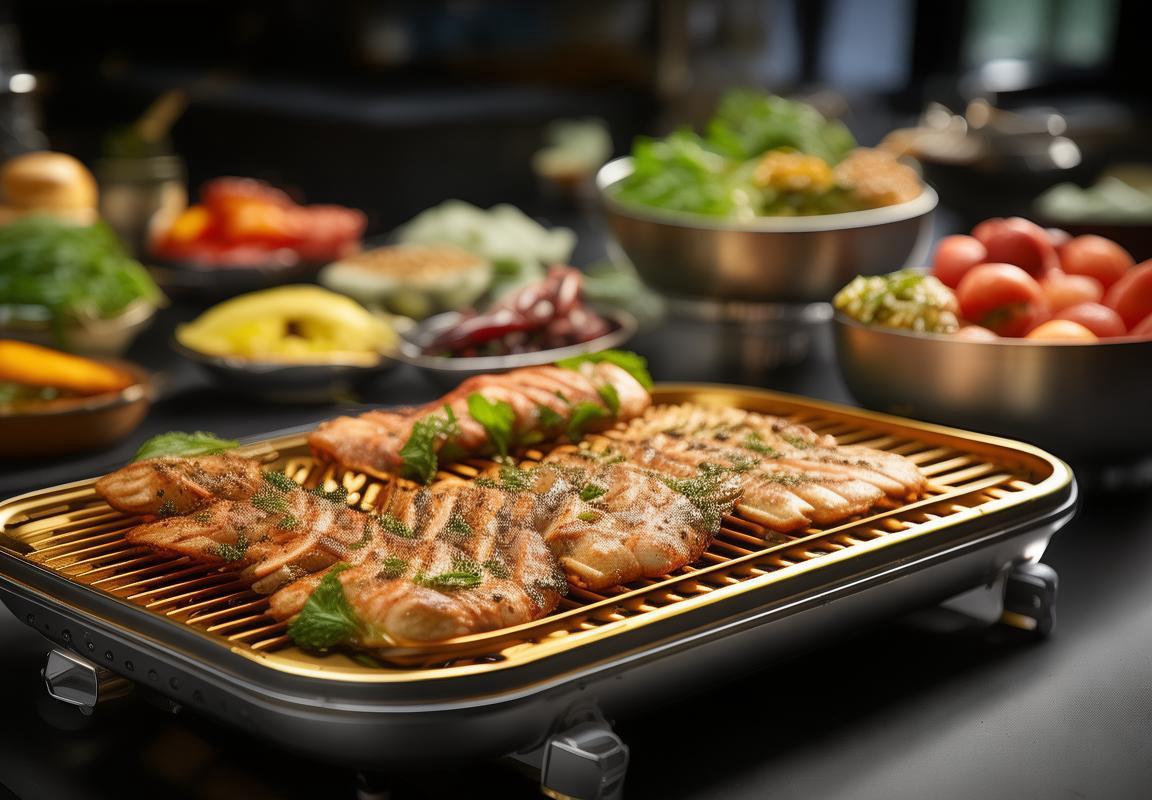
Innovations in Contact Grill Technology
In recent years, the contact grill market has witnessed a surge in technological advancements, transforming the way consumers approach outdoor cooking. These innovations not only enhance the cooking experience but also cater to a variety of consumer preferences. From enhanced heat distribution to features, here’s a delve into the latest technological innovations shaping the contact grill landscape.
The evolution of heat control systems has been a game-changer. Modern contact grills now come equipped with precision thermostats, allowing users to maintain a consistent and ideal cooking temperature. This feature is particularly beneficial for those who prefer a perfectly seared steak or a well-done burger without the risk of burning or undercooking.
One of the most significant innovations is the introduction of multi-zone heating elements. These grills can manage different temperature zones, providing versatility for a wide range of cooking methods, from grilling to smoking. This technology is a hit among chefs and enthusiasts looking to experiment with different culinary techniques.
Smart technology has also found its way into contact grills. With the integration of Bluetooth and Wi-Fi capabilities, these grills can be controlled remotely through smartphones or tablets. Users can preheat, adjust temperature, and even monitor cooking progress while away from the grill. This feature is not only convenient but also ensures that food is cooked to perfection without constant supervision.
The design of contact grills has seen a shift towards more user-friendly interfaces. Digital displays have replaced the traditional dials and knobs, offering clear, easy-to-read temperature settings and cooking timers. These intuitive interfaces make the grilling process less intimidating for beginners and more enjoyable for seasoned grillers.
Material advancements have also played a crucial role in the innovation of contact grills. High-quality stainless steel construction is now the norm, providing durability and resistance to rust and corrosion. Non-stick coatings have been improved, making cleaning easier and ensuring that food releases smoothly from the grill surface.
Another notable innovation is the inclusion of built-in smokers. These integrated smoking capabilities allow for the creation of complex flavors without the need for a separate smoker. With the push of a button, users can switch from grilling to smoking, adding a whole new dimension to their outdoor cooking adventures.
Safety features have also seen enhancements. Contact grills now come with features like automatic shut-off, which activate when the grill is left unattended for an extended period. This not only prevents accidents but also saves energy by turning off the grill when not in use.
In terms of portability, innovations such as collapsible legs and foldable designs have made contact grills more convenient for those who enjoy grilling on the go. These features allow users to transport their grills to picnics, tailgating events, or even camping trips without the hassle of disassembly.
The rise of contact grills has also sparked a trend in eco-friendly technology. Energy-efficient designs, such as induction cooking elements, are becoming more prevalent, offering quicker heating times and reduced energy consumption. This focus on sustainability resonates with environmentally conscious consumers who are looking for greener cooking options.
Lastly, the integration of cooking recipes and tutorials directly into the grill’s interface is another innovation that has gained traction. With this feature, users can follow step-by-step instructions for a variety of dishes, ensuring that even the most complex recipes are achievable with ease.
These technological advancements in contact grill technology have not only improved the cooking experience but have also expanded the possibilities for both casual and professional grillers. As the market continues to evolve, we can expect even more innovative features that will further elevate the art of grilling.
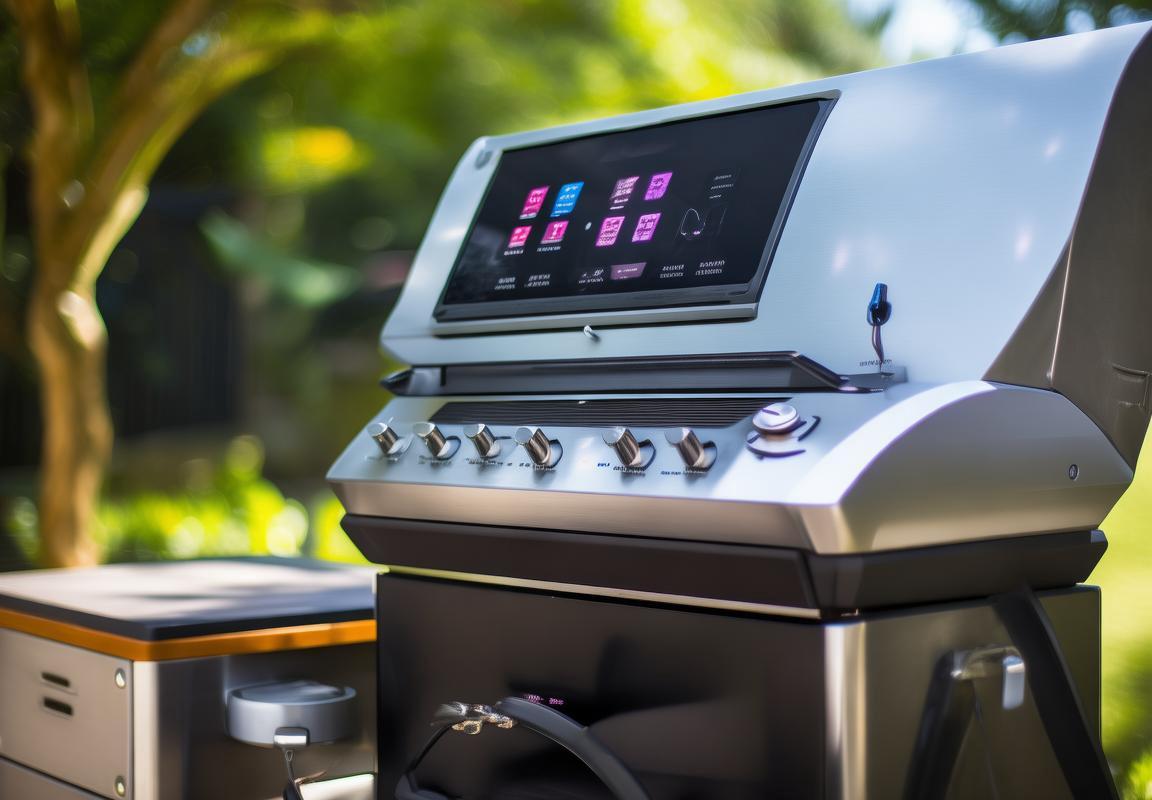
Impact of Sustainability on Contact Grill Vendor Strategies
In recent years, sustainability has emerged as a pivotal factor influencing consumer choices and business strategies across various industries. The contact grill market, once solely focused on performance and convenience, is now seeing a significant shift towards eco-friendly practices. This section explores how sustainability is impacting the strategies of contact grill vendors.
The demand for sustainable products has grown as consumers become more environmentally conscious. Vendors are responding by integrating sustainable materials into their grill designs. For instance, some brands are now using recycled stainless steel, which not only reduces waste but also appeals to environmentally conscious consumers.
Energy efficiency is another area where contact grill vendors are making strides. New models are being developed with advanced heat distribution systems that minimize energy consumption. These innovations not only help reduce the carbon footprint but also lower utility bills for consumers, making the product more cost-effective in the long run.
Eco-friendly packaging is also becoming a standard practice among contact grill vendors. Companies are increasingly opting for biodegradable or recyclable materials for their packaging, reducing the amount of plastic waste that ends up in landfills. This shift not only aligns with consumer expectations but also helps vendors meet stricter environmental regulations.
The lifecycle of a product is being reevaluated by contact grill vendors. Many are now offering extended warranties and recycling programs for their grills. These initiatives encourage customers to maintain their products for longer, reducing the frequency of replacements and the subsequent environmental impact.
Innovation in the realm of sustainable energy is also influencing contact grill vendor strategies. Some companies are exploring the integration of solar panels or energy-efficient LED lighting in their grills, aiming to create a more sustainable cooking experience. While these features may be more premium, they cater to a niche market of consumers who are willing to invest in greener technology.
Supply chain transparency is becoming a crucial aspect of contact grill vendor strategies. Vendors are under pressure to disclose the origins of their materials and the processes involved in manufacturing. This transparency not only builds trust with consumers but also allows them to make more informed purchasing decisions.
As the market for contact grills continues to evolve, vendors are also focusing on the recyclability of their products. By designing grills that can be easily disassembled and their components recycled, vendors are addressing the end-of-life stage of the product, which is a significant concern for environmentally conscious consumers.
The impact of sustainability on contact grill vendor strategies extends to marketing and branding. Companies are adopting greener messaging and imagery in their advertising campaigns, emphasizing their commitment to sustainability. This approach resonates with consumers who are more likely to support brands that align with their values.
Regulatory changes are also pushing contact grill vendors to adopt more sustainable practices. As governments around the world implement stricter environmental laws, vendors must adapt to comply with these regulations, which often involve reducing emissions and waste.
The rise of the sharing economy is influencing contact grill vendors as well. Some companies are exploring rental or subscription models for their grills, allowing consumers to use the product without the need for ownership. This approach not only reduces the environmental impact of manufacturing but also provides a more flexible and sustainable option for consumers.
In conclusion, sustainability is reshaping the strategies of contact grill vendors in numerous ways. From the materials used in manufacturing to the marketing of their products, vendors are adapting to meet the demands of an environmentally conscious consumer base. As these trends continue to evolve, it’s clear that sustainability will play a central role in the future of the contact grill market.
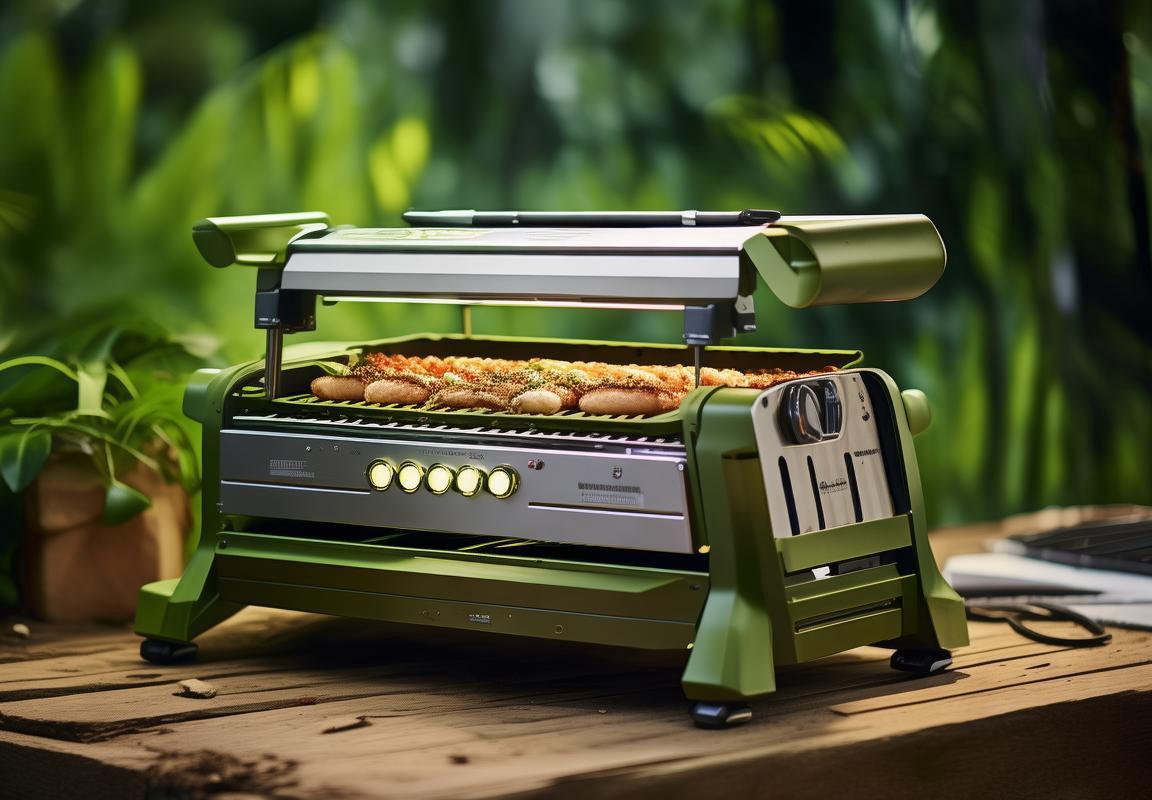
Comparative Analysis: Contact Grill Vendors in Europe vs. USA
In Europe, contact grill vendors have tailored their products to the continent’s diverse culinary preferences and cultural nuances. Brands like Tefal, Gaggenau, and Breville have gained significant traction by offering a range of features that cater to European tastes. For instance, Tefal’s ActiFry range, which combines contact grilling with air frying, has been a hit for its ability to create crispy, healthy dishes. Gaggenau’s high-end models, on the other hand, appeal to the European market’s appreciation for sleek design and advanced technology. The European market also tends to favor eco-friendly options, with a growing number of vendors integrating energy-efficient features into their contact grills.
In the USA, the contact grill market is dominated by a mix of well-established and emerging brands. The market is characterized by a strong preference for versatility and convenience. Brands like George Foreman and Char-Broil have long been staples, offering grills that are easy to use and maintain. The American consumer is also keen on innovation, with features like digital controls and adjustable temperature settings becoming increasingly popular. The US market also sees a significant focus on health and wellness, with a rise in interest in grills that can produce healthier, low-fat meals.
European contact grill vendors often focus on the quality of materials and the longevity of their products. They prioritize durability and robustness, which is reflected in their premium pricing. The European consumer is also more likely to invest in a single, high-quality grill rather than opting for multiple, lower-end models. In contrast, the US market is more price-sensitive, with consumers often looking for the best value for their money. This has led to a competitive landscape where affordability is a key differentiator.
When it comes to marketing strategies, European vendors tend to emphasize the craftsmanship and design of their products. They often leverage the image of luxury and sophistication to appeal to a discerning clientele. The US market, however, is more influenced by celebrity endorsements and social media campaigns. Brands like George Foreman have used influencer marketing effectively to tap into the American consumer’s desire for trendy and aspirational products.
Product diversity is another area where the two markets differ. In Europe, there’s a greater emphasis on niche products that cater to specific cooking styles or dietary needs. For example, there are contact grills designed specifically for making crepes or paninis. In the USA, the market is broader, with a wider range of grills that appeal to a more general audience. This includes grills that can double as indoor smokers or outdoor cooking stations.
In terms of technological advancements, both regions have seen significant progress. However, European vendors often lead the way in incorporating the latest innovations into their contact grills. This includes features like smart technology integration, which allows users to control their grills remotely via apps. The US market has also embraced smart grills, but at a slightly slower pace compared to Europe.
In conclusion, while there are similarities in the contact grill market between Europe and the USA, the nuances in consumer preferences, design aesthetics, and marketing strategies highlight the distinct approaches taken by vendors in each region. Understanding these differences is crucial for contact grill vendors looking to expand their market presence and cater to the unique needs of consumers in both Europe and the USA.
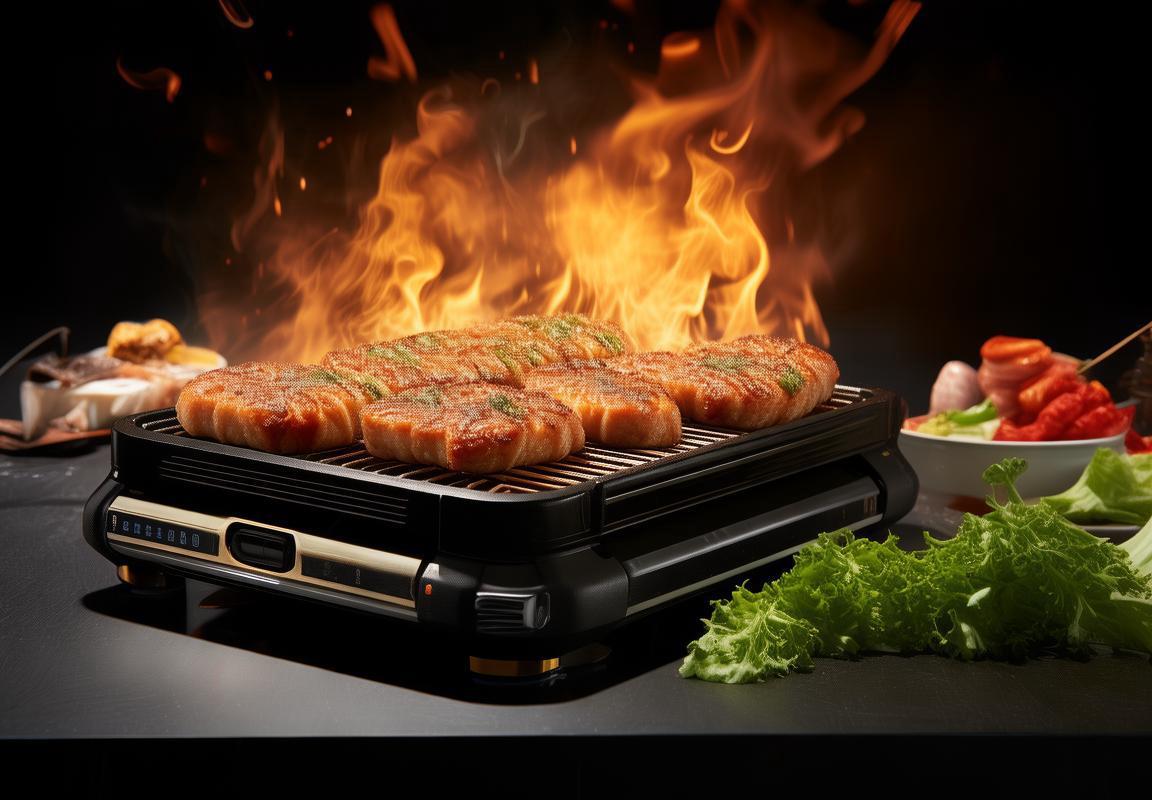
Consumer Insights: What Buyers Look for in Contact Grill Vendors
Consumers seeking contact grill vendors often weigh several factors to ensure they make an informed purchase. Here’s a closer look at what buyers typically look for:
The quality of the cooking surface is paramount. Buyers are on the hunt for grills with non-stick coatings that not only enhance the cooking experience but also ensure easy cleaning. The durability of the surface material, whether it’s cast aluminum, stainless steel, or other high-quality metals, is also a significant consideration.
Ease of use is a crucial factor. Modern consumers value convenience, and a contact grill that is easy to set up, operate, and clean is highly sought after. Features like adjustable heat settings, digital controls, and intuitive interfaces play a vital role in attracting buyers.
Portability is increasingly becoming a key attribute. Many consumers are looking for contact grills that can be easily moved from one location to another, making them perfect for outdoor gatherings, camping trips, or even as a secondary cooking option in smaller kitchens.
Safety features are non-negotiable. Buyers are wary of grills with potential hazards, such as sharp edges or exposed heating elements. Safety certifications, such as those from Underwriters Laboratories (UL) or the Canadian Standards Association (CSA), provide peace of mind and are often a deciding factor in the purchasing process.
Brand reputation and customer service are influential. Consumers tend to gravitate towards brands that have a solid track record of quality and reliability. Positive reviews, a strong warranty, and responsive customer support can significantly impact a buyer’s decision.
Energy efficiency is a growing concern. With rising energy costs and environmental consciousness on the rise, buyers are more likely to choose a contact grill that is energy-efficient, offering quick cooking times and minimal energy consumption.
Cooking versatility is appealing. Many buyers are interested in a contact grill that can handle a variety of cooking techniques, from searing steaks to toasting sandwiches. Additional features like a removable grill plate for flipping food or a panini press can enhance the grill’s utility.
Design and aesthetics matter. The appearance of the contact grill can be a dealbreaker or a dealmaker. Consumers often seek a grill that complements their kitchen’s decor or stands out as a stylish piece of kitchen equipment.
Price is a balancing act. While price is a significant factor, buyers are increasingly willing to invest in a higher-quality contact grill if it meets their other needs. Finding the right balance between cost and quality is a common challenge.
Durability is a key consideration. The longevity of the grill is important, as buyers don’t want to replace it frequently. A grill that is built to last, with sturdy construction and high-quality components, is highly desirable.
Warranty and after-sales service are important. A comprehensive warranty and reliable after-sales service can make a big difference in the buyer’s satisfaction. Knowing that the vendor stands behind their product can ease concerns about potential issues down the line.
Finally, the availability of replacement parts is a practical consideration. Buyers prefer a contact grill that has readily available parts in case of damage or wear and tear. This ensures that the grill can be maintained and repaired over its lifetime.
In summary, buyers of contact grill vendors are looking for a product that balances quality, convenience, safety, and aesthetic appeal. By understanding these key factors, vendors can better cater to consumer needs and build a loyal customer base.
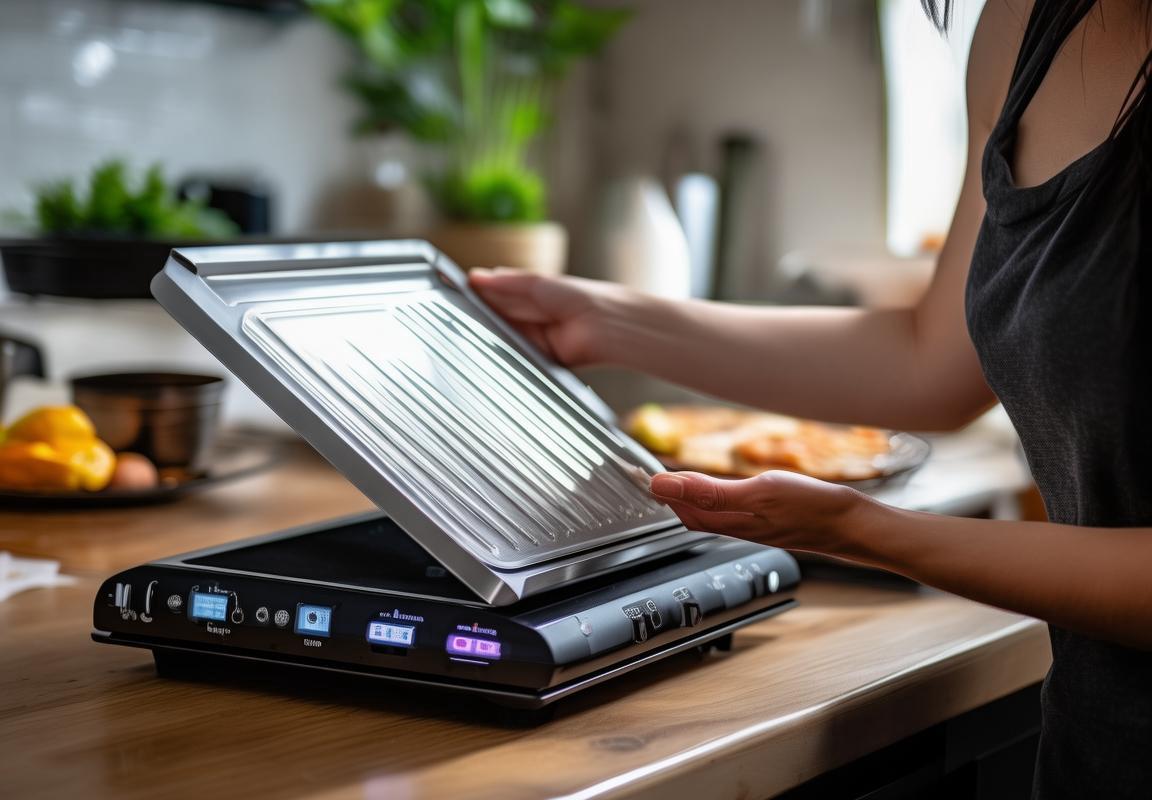
Regulatory Environment and Compliance Challenges
The regulatory landscape surrounding the contact grill industry is complex, with various bodies and standards dictating how vendors must operate. Understanding these environments is crucial for compliance and market success.
Grill vendors must navigate a patchwork of local, regional, and international regulations. In Europe, for instance, the European Union’s stringent safety and environmental standards are a cornerstone of compliance. This includes adherence to the General Product Safety Directive (GPSD) and the Restriction of Hazardous Substances (RoHS) directive, which limits the use of certain hazardous materials in electrical and electronic products.
In the USA, the landscape is similarly multifaceted. The Consumer Product Safety Commission (CPSC) oversees product safety, while the Federal Communications Commission (FCC) regulates electromagnetic emissions. Additionally, the Food and Drug Administration (FDA) may have a say, especially if the contact grill is used for cooking food, as it must comply with food safety regulations.
Environmental regulations are also a significant concern. Contact grills, like all electrical appliances, must meet energy efficiency standards. In Europe, this is governed by the Energy-related Products (ErP) directive, which aims to reduce energy consumption and carbon emissions. In the USA, the Energy Star program helps consumers identify energy-efficient products, though it is not a mandatory standard.
The RoHS directive in Europe and the similar RoHS2 in the USA are particularly challenging for contact grill vendors. These regulations ban the use of certain hazardous substances such as lead, mercury, and cadmium in electrical and electronic equipment. Ensuring that materials used in the construction of contact grills meet these standards requires rigorous testing and quality control.
Compliance with these regulations can be costly and time-consuming. Vendors must invest in testing facilities, hire experts to ensure compliance, and stay abreast of any changes in the regulatory landscape. This is not just about avoiding fines; it’s about maintaining the trust of consumers and the reputation of the brand.
Moreover, the regulatory environment is dynamic. New standards are introduced, and existing ones are updated. For example, the EU’s Restriction on the Use of Certain Hazardous Substances in Electrical and Electronic Equipment (RoHS) directive was updated in 2011 to include more substances and to lower the permissible levels of existing ones. Vendors must be agile and proactive to keep up with these changes.
In the USA, the CPSC’s jurisdiction over product safety is broad, and it can impose strict penalties for non-compliance. The agency conducts investigations and can recall products that pose a risk to consumers. This means that contact grill vendors must have robust quality assurance processes in place to prevent defective products from reaching the market.
The FDA’s involvement in food safety is another layer of complexity. Vendors must ensure that their contact grills are designed and manufactured in a way that prevents contamination and maintains the integrity of the food being cooked. This includes considerations for surface materials, heat distribution, and the overall design of the grill.
In addition to these direct regulatory challenges, contact grill vendors must also consider the broader implications of their products on sustainability and the environment. This includes the sourcing of materials, the energy consumption of the product throughout its lifecycle, and the end-of-life disposal of the grill itself.
The regulatory environment is not just a challenge; it’s an opportunity for innovation. Vendors that can demonstrate a commitment to safety, environmental responsibility, and quality are likely to gain a competitive edge. They can use compliance as a selling point, highlighting their commitment to consumer well-being and the planet.
To navigate this complex regulatory environment, contact grill vendors often turn to industry associations and trade groups for guidance. These organizations provide resources, training, and networking opportunities that can help vendors stay compliant and informed.
In conclusion, the regulatory environment and compliance challenges are a significant part of the contact grill industry. Vendors must be proactive, informed, and willing to invest in the necessary resources to ensure they meet all applicable standards. The rewards for doing so can be substantial, not only in terms of avoiding penalties and maintaining a good reputation but also in fostering consumer trust and loyalty.

Forecast and Future Outlook for Contact Grill Vendors
The contact grill market has been witnessing a surge in popularity, driven by consumers’ increasing preference for healthier cooking methods and the convenience they offer. As a result, the industry has seen a proliferation of vendors, each vying for a share of this growing market. Understanding these key players is crucial for anyone looking to navigate the competitive landscape of contact grill vendors.
In Europe, brands like T-fal, Breville, and Gaggenau have established themselves as leading players in the contact grill market. T-fal, known for its affordable and user-friendly appliances, has a wide range of contact grills that cater to different budgets and cooking needs. Breville, on the other hand, is recognized for its high-quality, premium products that are often seen as a status symbol in the kitchen. Gaggenau, a part of the BSH Home Appliances Group, offers top-of-the-line contact grills that are favored by professional chefs and serious home cooks alike.
In the USA, the market is similarly diverse, with names like George Foreman, Char-Broil, and Hamilton Beach holding significant market share. George Foreman, with its iconic line of grills, has become synonymous with the contact grill category. Char-Broil, known for its outdoor grilling products, has expanded its portfolio to include contact grills that are well-suited for both indoor and outdoor cooking. Hamilton Beach, with its focus on consumer convenience, offers a variety of contact grills that are easy to use and maintain.
One trend that has been gaining traction in the contact grill market is the integration of smart technology. Vendors are increasingly incorporating features like Bluetooth connectivity, digital temperature control, and app integration into their products. This not only enhances the user experience but also allows for greater precision and control over the cooking process.
The rise of health-conscious consumers has also influenced the strategies of contact grill vendors. Many brands are now offering models that are designed to reduce the amount of fat and calories in food, such as those with adjustable heat settings and non-stick surfaces. This shift towards healthier cooking options has opened up new opportunities for vendors to cater to a broader audience.
Another key factor in the success of contact grill vendors is the emphasis on durability and ease of cleaning. With the busy lifestyles of today’s consumers, appliances that are both robust and easy to maintain are highly sought after. Vendors are responding by using high-quality materials and designing grills with removable parts that make cleaning a breeze.
In Europe, the contact grill market is also being shaped by the preference for eco-friendly products. Consumers are increasingly looking for appliances that are energy-efficient and made with sustainable materials. This has led to a rise in the number of vendors offering contact grills that are certified by environmental organizations such as Energy Star and the Forest Stewardship Council (FSC).
The competition among contact grill vendors is fierce, with each brand trying to differentiate itself in the market. One way they do this is through marketing campaigns that highlight the unique features of their products. For example, some vendors are focusing on the convenience of quick cooking times, while others are emphasizing the versatility of their grills, which can be used for a variety of cooking methods, including grilling, searing, and even baking.
In the USA, the market is characterized by a strong emphasis on innovation and product development. Vendors are constantly looking for new ways to improve their products, whether it’s through the use of advanced materials, such as ceramic or titanium, or through the integration of smart features that make cooking easier and more enjoyable.
As the contact grill market continues to grow, vendors are also facing new challenges. One of the most significant is the need to comply with evolving regulations regarding food safety and appliance standards. This includes adhering to strict guidelines on materials used in manufacturing, as well as ensuring that products meet certain performance criteria.
Another challenge is the need to keep up with the fast pace of technological advancements. Vendors must invest in research and development to stay ahead of the curve and offer products that meet the changing demands of consumers. This can be a costly endeavor, but it is essential for long-term success in a highly competitive market.
In conclusion, the key players in the contact grill market are diverse and dynamic, each with its own strengths and strategies. Whether it’s through innovation, sustainability, or a focus on consumer convenience, these vendors are working hard to capture a share of the growing market. As the market continues to evolve, it will be interesting to see how these key players adapt and grow, and what new trends will emerge in the world of contact grills.